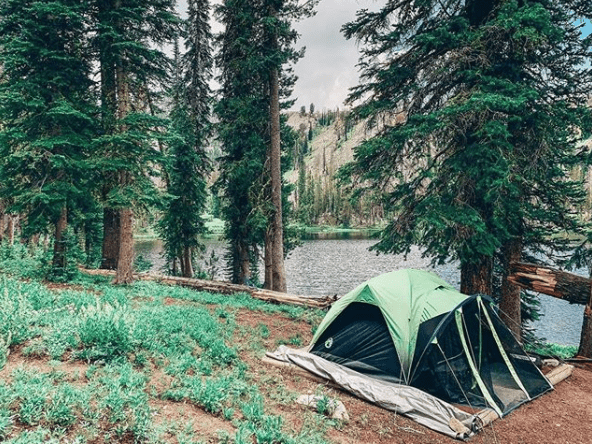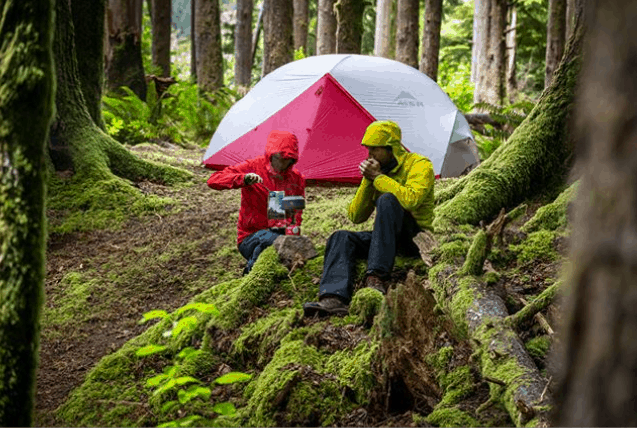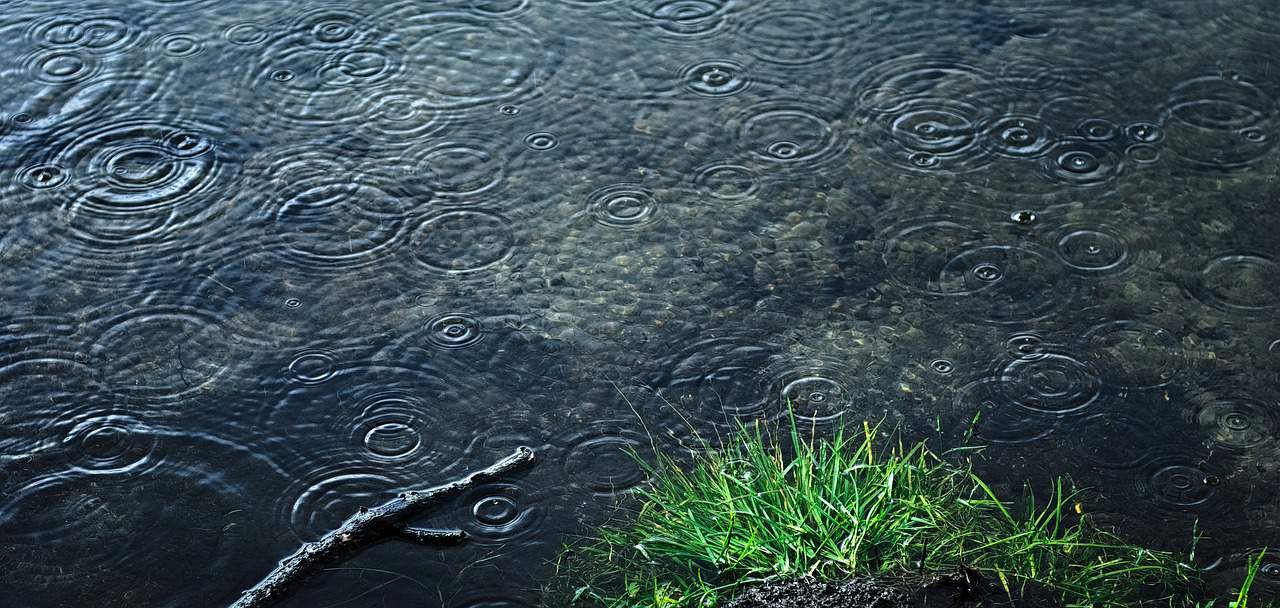While we all wish for perfect camping weather each time we go camping, in reality, this rarely is the case. As there is almost always at least a chance of rain each time we go camping. Which is why it’s so important to have a waterproof tent for camping.
Perhaps this is why campers so often times wonder if Coleman tents are waterproof?
So as a camper that has owned several Coleman tents over the years I thought I would answer this question once and for all.
While Coleman tents are not the most waterproof tents on the market, they do offer a good amount of waterproofing and make a great 3-season tent for the average camper at an affordable price. If however, you plan on camping in extreme weather conditions it’s best to move up to a 4-season tent which Coleman does not make.
This is just the tip of the iceberg though in whether or not Coleman tents are waterproof.
So if you want a more detailed answer, keep reading as we go into all specs and details about Coleman tent waterproofing that you need to know if your thinking about buying a Coleman tent.
Are Coleman Tents Waterproof?

Yes, Coleman tents are waterproof, however, whether a tent is waterproof is not just a simple yes or no answer as there are many degrees of waterproofing in the tent industry and limits to a tent’s level of waterproofing.
Because of this, it’s important to take a closer look at tent waterproofing and what exactly makes a Coleman tent waterproof.
How Are Tents Waterproofed?
Most modern tents today including Coleman tents use a polyester fabric because of its durability and lightweight properties. However, it’s a common misconception that the tent or rainfly fabric itself is what provides the waterproofing.
Because in actuality, polyester as well as other types of tent fabrics offer very little waterproofing by themselves and instead rely on a waterproof coating applied by the manufacturer to make the fabric waterproof or resistant to rain and snow.
Because without this waterproof coating, the fabric would quickly become saturated and allow water to leak into the tent.
So when it comes to a tent’s waterproofing it’s all about the quality as well as the amount of waterproof coating applied to the tent fabrics that determines how waterproof a tent will be.
To determine the tent’s waterproof capabilities, you want to look for its waterproof rating which is usually expressed in millimeters.
In general, when looking at a tent’s waterproof rating you want to see a rating of at least 1000mm which is usually where most Coleman tents fall.
And while you might assume that the most important place to have this higher waterproof rating is on the rainfly, in actuality it’s more important to have a good waterproof rating for the floor due to the pressure being applied to the fabric which can compromise the tents waterproofing.
However, this is not something you really need to worry about as most tents do not give individual waterproof ratings for different sections of the tent and instead provide one number that indicates the entire tent’s level of waterproofing.
How are Coleman Tents Waterproofed?
While the most important part of a Coleman tent’s waterproofing is its waterproof coating there are actually several other design features that Coleman uses in order to ensure you stay nice and dry inside your tent when the weather turns bad outside.
Which is really a multitude of waterproofing features that they refer to as their WeatherTec™ System.
Starting at the bottom of the tent, Coleman uses a bath-tub design on all their tents. Which places the bottom seams of the tent about a foot up the side of the tent as opposed to at the ground where many other tent manufacturers place their seams. Providing less of a chance of water seeping in at the bottom of the tent.
Speaking of the seams, which tends to be the most common places for tents to leak, Coleman goes the extra mile by using inverted and covered seams in their tent designs to help keep the water on the outside of the tent where it belongs.
Finally, the patented welded corners which not only help with the structural integrity of the tent but also with the waterproofing is the last piece of the WeaherTec™ System by Coleman.
And if you still have doubts about how serious Coleman takes their waterproofing watch this quick video that shoes how Coleman tests the waterproofing on their tents.
Do Tents Lose their Waterproofing?
Even though most tents have a good level of waterproofing from the manufacturer, if you want to keep your tent waterproof, you will have to apply a new waterproofing coating every so often as tents do lose their waterproofing over time.
This is because dirt and oil get ground into the tent fabric while camping over time which compromises the waterproof coating.
So if you want to extend the waterproof capabilities of the tent, the best thing you can do is make sure you always put your tent away clean and avoid stepping on the tent while setting it up or taking it down.
No matter how well you care for the tent though there will come a time when the tent’s waterproofing will fade and start to fail.
How often you need to reapply a waterproof coating to your tent depends mainly on how often you go camping and use the tent.
A good rule of thumb though is that you should reapply a fresh coat of waterproofing to your tent after four to six weeks of camping or every two years depending on which comes first.
To reapply a waterproof coating to a tent there are two main products you will need including a water-repellent spray as well as a seam sealer. (We like the Kiwi Camp Dry Heavy Duty Water Repellent Spray which you can check out on Amazon by clicking here and the Gear Aid Seam Sealent which you check out on Amazon by clicking here.)
To learn how to properly use these products to waterproof your tent check out this super helpful video from REI on how to refresh the waterproof coating of your tent.
Are Most Tents Waterproof?
In general, yes, most tents have some level of waterproofing applied to them. However, there are degrees and levels of waterproofing when it comes to tents.
For example, your cheap 1 or 2 season tents will usually have little to no waterproofing and can’t handle more than a light drizzle before the water starts pouring inside.
While your more common 3 season mid-range tent will have a good level of waterproofing that should be able to handle some light rain and an occasional thunderstorm. However, even a 3 season tent has its limits when it comes to waterproofing and will start to leak with enough water and rain.
So if you’re planning an extreme camping expedition where your tent will be exposed to extreme weather conditions or torrential rains, you will need to move up to the more expensive and less common 4 season tent, as this type of tent has the ultimate level of waterproofing.
What is the Best Waterproof Tent?
Trying to pick one tent as the best waterproof tent is a very challenging proposition as there are many excellent waterproof tents on the market today from a variety of quality brands such as MSR, Big Agnes, Coleman, North Face, and REI.
However, if I had to pick one tent as the best waterproof tent on the market today, those honors would probably have to go to the MSR Mutha Hubba NX 3 Person Tent.

While there might be other tents that offer the same level of waterproofing as this waterproof tent from MSR, it would be hard for another tent to beat this tent’s level of waterproofing.
From top to bottom, this tent offers an extreme level of waterproofing, from its fully extended rainfly that runs all the way to the ground, to the high-end waterproofing coating that’s applied to this tent.
All of this waterproofing does come at a cost though, as the average retail price for this tent is usually over $500. (To check the price of the MSR Mutha Hubba NX 3 Person Tent on Amazon click here.)
Should You Put a Tarp Under Your Tent?
If your tent did not come with a ground cover sheet to place under the tent, adding a tarp under the tent can provide an additional layer of protection from the rain and weather and also helps to prevent water from leaking into the bottom of the tent.
Adding a tarp underneath the tent also helps to keep the tent out of the dirt and mud, allowing you to keep the tent cleaner.
There is a right and a wrong way to place a tarp under a tent though, in fact, if you don’t place the tarp under your tent properly you can actually do more harm than good.
Instruction For Properly Placing a Tarp Under Your Tent
- Purchase a tarp or groundsheet that is as close to your tent’s footprint as possible, however, keep in mind that you can double over the tarp if need be to properly size the tarp for your tent’s footprint.
- Clear away any rocks, sticks, or debris from the ground that could puncture or damage your tarp or ground cover.
- Layout the tarp so the dimensions are the same size as your tent’s footprint.
- Stake out the corners as well as the sides of the tarp where need be, to keep the tarp taut and in place.
- Make sure your tarp does not come out past the tent’s footprint to prevent the tarp from collecting water and funneling it under your tent.
If you still have questions about how to properly place a tarp or groundsheet under your tent, check out this short helpful YouTube video.
Are Coleman Tents Machine Washable?
According to the Coleman tent care instructions, you should never machine wash your Coleman tent as it can damage or tear the tent’s fabrics.
Instead, if your tent becomes dirty while camping, Coleman recommends you use a sponge and mild soap to wipe away any dirt from the tent. Just make sure to allow plenty of time for the tent to fully dry before storing it away.

